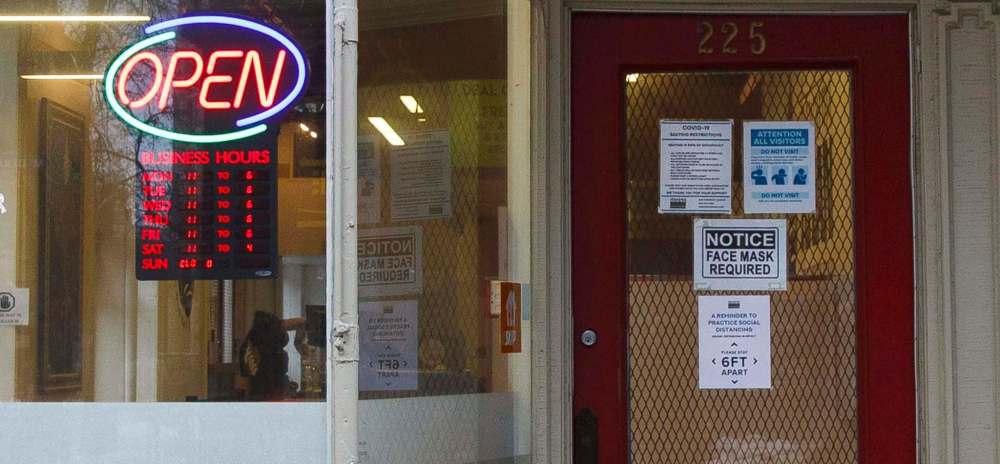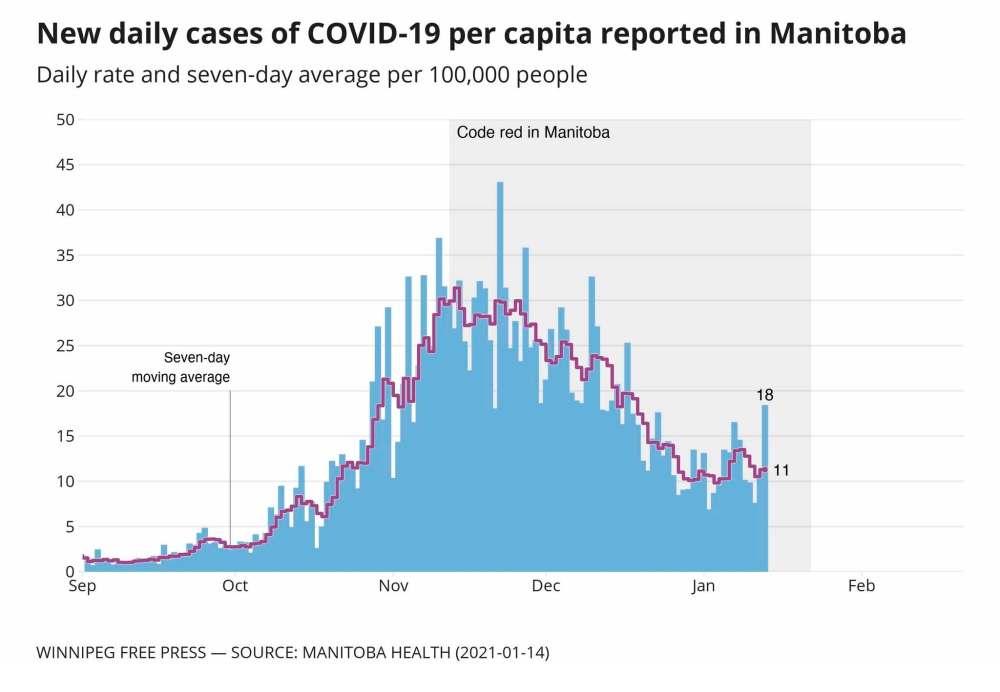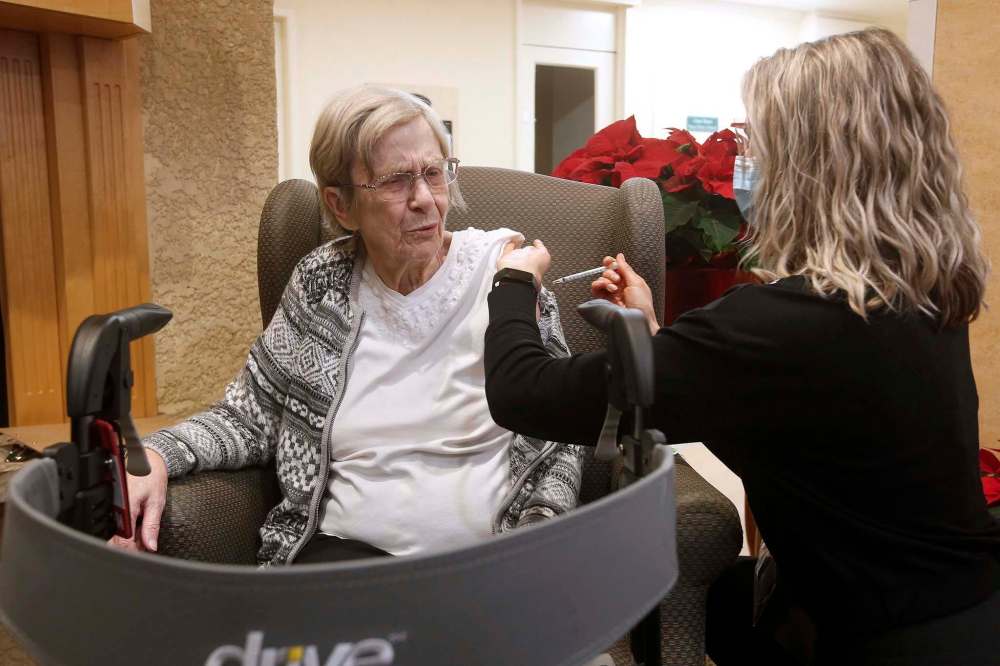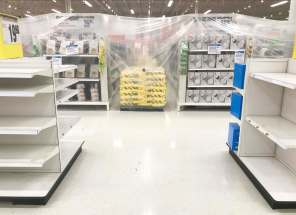Balancing act: Manitoba’s way out of code red requires fine-tuning, careful consideration
Read this article for free:
or
Already have an account? Log in here »
To continue reading, please subscribe:
Monthly Digital Subscription
$0 for the first 4 weeks*
- Enjoy unlimited reading on winnipegfreepress.com
- Read the E-Edition, our digital replica newspaper
- Access News Break, our award-winning app
- Play interactive puzzles
*No charge for 4 weeks then price increases to the regular rate of $19.00 plus GST every four weeks. Offer available to new and qualified returning subscribers only. Cancel any time.
Monthly Digital Subscription
$4.75/week*
- Enjoy unlimited reading on winnipegfreepress.com
- Read the E-Edition, our digital replica newspaper
- Access News Break, our award-winning app
- Play interactive puzzles
*Billed as $19 plus GST every four weeks. Cancel any time.
To continue reading, please subscribe:
Add Free Press access to your Brandon Sun subscription for only an additional
$1 for the first 4 weeks*
*Your next subscription payment will increase by $1.00 and you will be charged $16.99 plus GST for four weeks. After four weeks, your payment will increase to $23.99 plus GST every four weeks.
Read unlimited articles for free today:
or
Already have an account? Log in here »
Hey there, time traveller!
This article was published 14/01/2021 (1794 days ago), so information in it may no longer be current.
Following nine weeks of punishing restrictions in which Manitobans have been banned from gathering with friends or opening their businesses, epidemiologists caution the way out of code red will be uphill as public health officials decide what to reopen and when.
“It’s a very difficult question, but it’s probably the most important question to be thinking about now,” said Dr. Joel Kettner, an epidemiologist and former chief provincial public health officer.
So far, public health officials, including Manitoba’s top doctor, Brent Roussin and his deputy, Dr. Jazz Atwal, have shared few insights into the province’s plans to potentially ease public health orders.

Manitoba’s current set of restrictions, which have outlawed household social gatherings, limited retail purchases, closed places of worship and capped funeral sizes, are set to expire on Jan. 22.
“Manitoba’s strategy… it is a more generalized strategy, and therefore the harms that come from those social, and educational and economic consequences of the generalized strategy are quite significant,” Kettner said in an interview with the Free Press.
“Of course, that would be part of the method of deciding what to open up: what are the most harmful consequences of the restrictions? That would be a very important part of the considerations.”
Manitoba public health officials say the orders have reduced cases after they soared throughout the late fall and winter, with the five-day test positivity rate topping out at 14.2 per cent.
On Thursday, Manitoba reported 261 new cases of COVID-19; 75 of which were in Winnipeg while outbreaks continue to drive high case counts in the north.
However, in the capital city, the number of tests that came back positive over the past five days dipped to 7.1 per cent, the lowest it’s been since late October. Provincially, the five-day test positivity rate was 10 per cent.
Atwal has called the trajectory encouraging but said numbers need to continue to decline to reduce the burden on hospitals and avoid a resurgence. On Thursday, 290 people were receiving treatment in hospital related to COVID-19, including 37 in intensive care.
When it comes to the priority areas for reopening, Atwal said Wednesday officials will consider the regional and provincial epidemiology of the virus, risks and lessons learned.

“Again, we want to have the least amount of restrictions placed on Manitobans,” Atwal said. “But we also want to make sure that we don’t end up on a pendulum here, where it swings the other way really fast and we’re in a dire situation with the number of cases developing in a short period of time.”
In contemplating the loosening of restrictions, Kettner said public health officials should examine where COVID-19 infections are occurring, and in particular, where those who experienced severe outcomes from the virus came into contact with the disease. He called for more transparency and data sharing by the province on both accounts.
“We would answer the question about what could have been done to protect that person who was at high risk, then we have a strategy that becomes more specific to what the actual goals and objectives are,” Kettner said.
Winnipeg epidemiologist Cynthia Carr said lifting restrictions on household social gatherings is unlikely to form a part of the provincial government’s initial rollback, adding household spread is “common, it’s quick and it’s often asymptomatic.”
“I would not at all encourage household gatherings until we’ve done some of these other openings, which might sound counterintuitive because globally it’s more people, but it’s more people for shorter periods of time in larger areas,” Carr said.
Rather, areas likely to see more flexibility as part of the province’s early reopening will be health care services that have been postponed or cut back, expanded retail options, recreation for children and even limited dining-in at restaurants, she said.
However, loosening restrictions should only be considered if Manitoba can get the average number of cases a day per 100,000 people down to about five, Carr said.

At that rate, the Harvard Global Health Institute’s COVID-19 suppression guidance suggests the virus can be managed with rigorous testing and tracing programs.
Currently, Manitoba is averaging 11 cases a day per 100,000 people, which would fall into the orange-risk level, indicating accelerated spread of the virus.
“I’d like to have something stronger than where we’re at now just to see a continuation of a trend towards that target of the green zone,” Carr said.
Carr said regional epidemiology of COVID-19 should also be taken into account when considering the eventual easing of restrictions, something public health officials have said is on the table.
“A measure that might apply to an urban setting such as Winnipeg is not the same as what might need to be done in areas, whether it’s rural or northern, because we all have very different living conditions, access to health care, opportunities for self-isolating,” Carr said.
On Thursday, Atwal described the spread of COVID-19 in Winnipeg as being among close contacts, many of whom are from the same household. At present, there are about 1,394 active cases provincewide, he said.
The province’s contact tracing system is also managing the current volume of cases; 80 per cent of contacts are reached by a public health nurse within 24 hours, and 90 per cent are reached within 48 hours, he said.

When the time comes to ease restrictions, public opinion should form part of the decision-making process — in combination with scientific data and evidence collected by public health — Kettner said.
“We’re talking about things related to the economy, education, social and psychological circumstances… a whole bunch of things that really have more to do with social values, priorities,” Kettner said. “They are more things for the public to decide on how to weigh benefits and harms.”
Atwal has said public consultation on the new health order will occur, but details have not yet been announced.
danielle.dasilva@freepress.mb.ca

Our newsroom depends on a growing audience of readers to power our journalism. If you are not a paid reader, please consider becoming a subscriber.
Our newsroom depends on its audience of readers to power our journalism. Thank you for your support.








